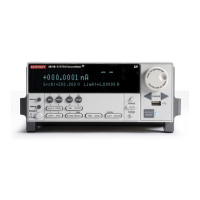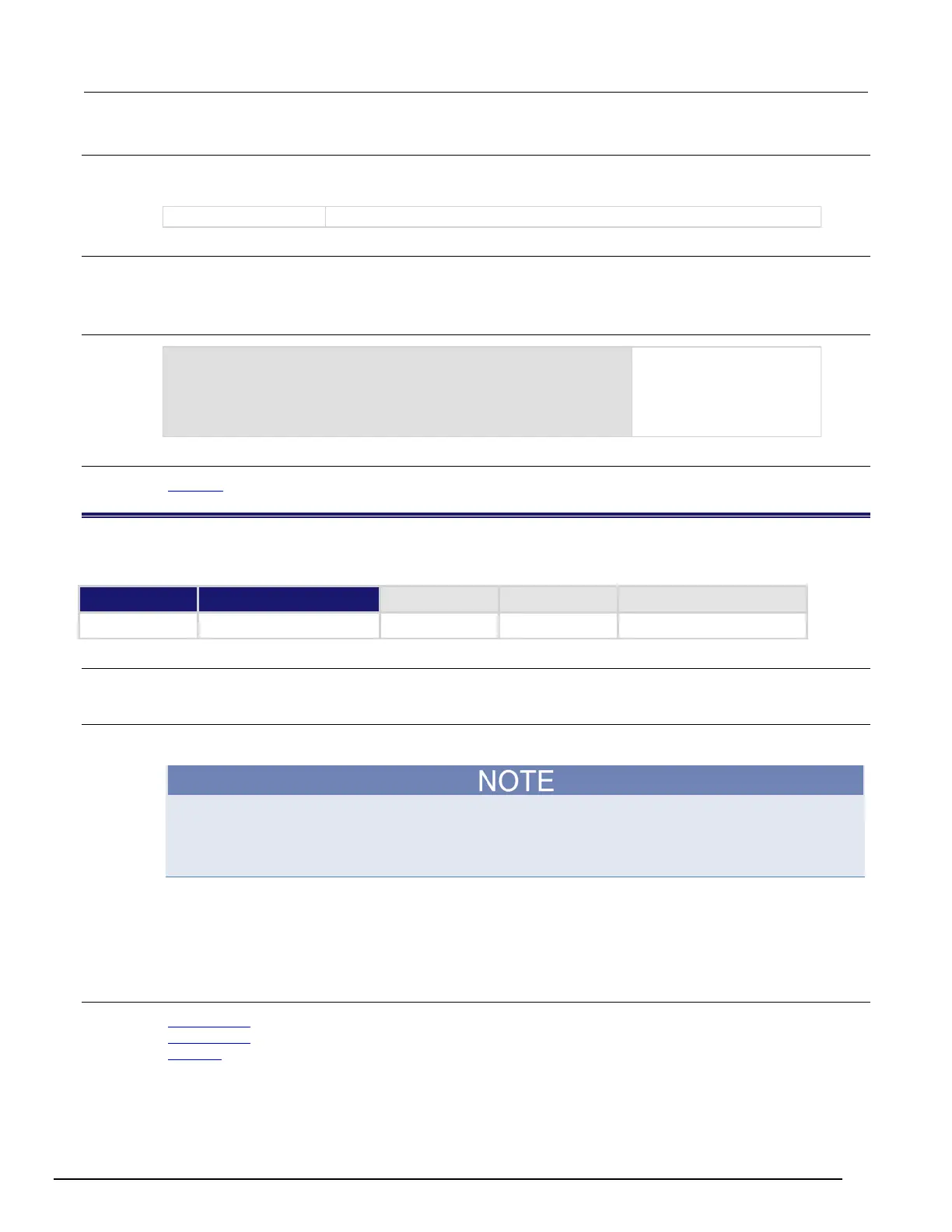System SourceMeter® Instrument Reference Manual Section 7:
2600BS-901-01 Rev. B / May 2013 7-107
Usage
io.close()
io.close(file)
The descriptor of the file to close
Details
If a file is not specified, the default output file closes.
Only io.close(), used without specifying a parameter, can be accessed from a remote node.
Example
testFile, testError = io.open("testfile.txt", "w")
if nil == testError then
testFile:write("This is my test file")
io.close(testFile)
for writing. If no errors were
found while opening, writes
"This is my test
and closes the file.
Also see
io.open() (on page 7-108)
io.flush()
This function saves buffered data to a file.
Type TSP-Link accessible Affected by Where saved Default value
Usage
io.flush()
Details
You must use the io.flush() or io.close() functions to write data to the file system.
Data is not automatically written to a file when you use the io.write() function. The io.write()
function buffers data; it may not be written to the USB drive immediately. Use the io.flush()
function to immediately write buffered data to the drive.
This function only flushes the default output file.
Using this command removes the need to close a file after writing to it and allows it to be left open to write more
data. Data may be lost if the file is not closed or flushed before an application ends. To prevent the loss of data if
there is going to be a time delay before more data is written (and when you want to keep the file open and not
close it), flush the file after writing to it.
Also see
fileVar:flush() (on page 7-89)
fileVar:write() (on page 7-91)
io.write() (on page 7-111)

